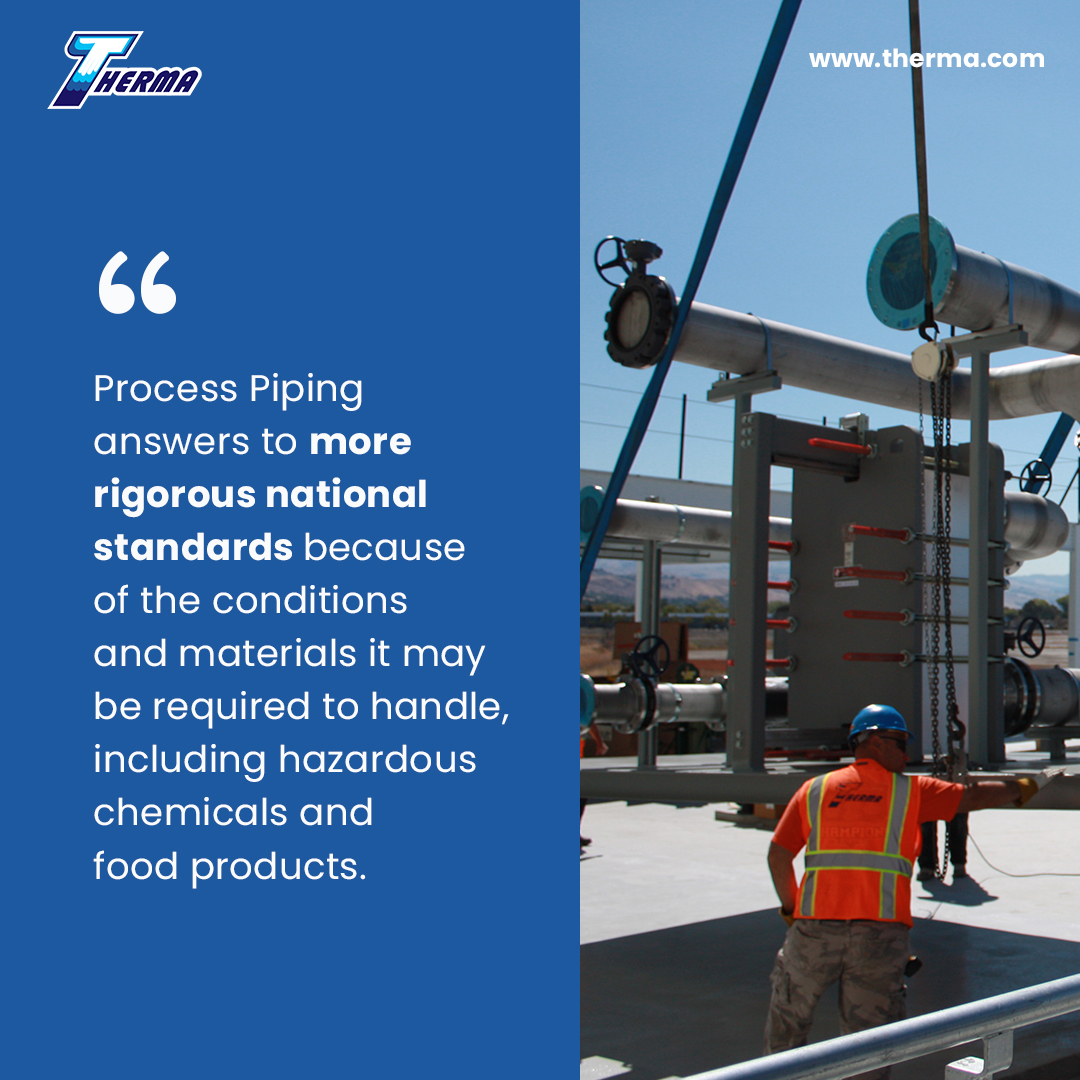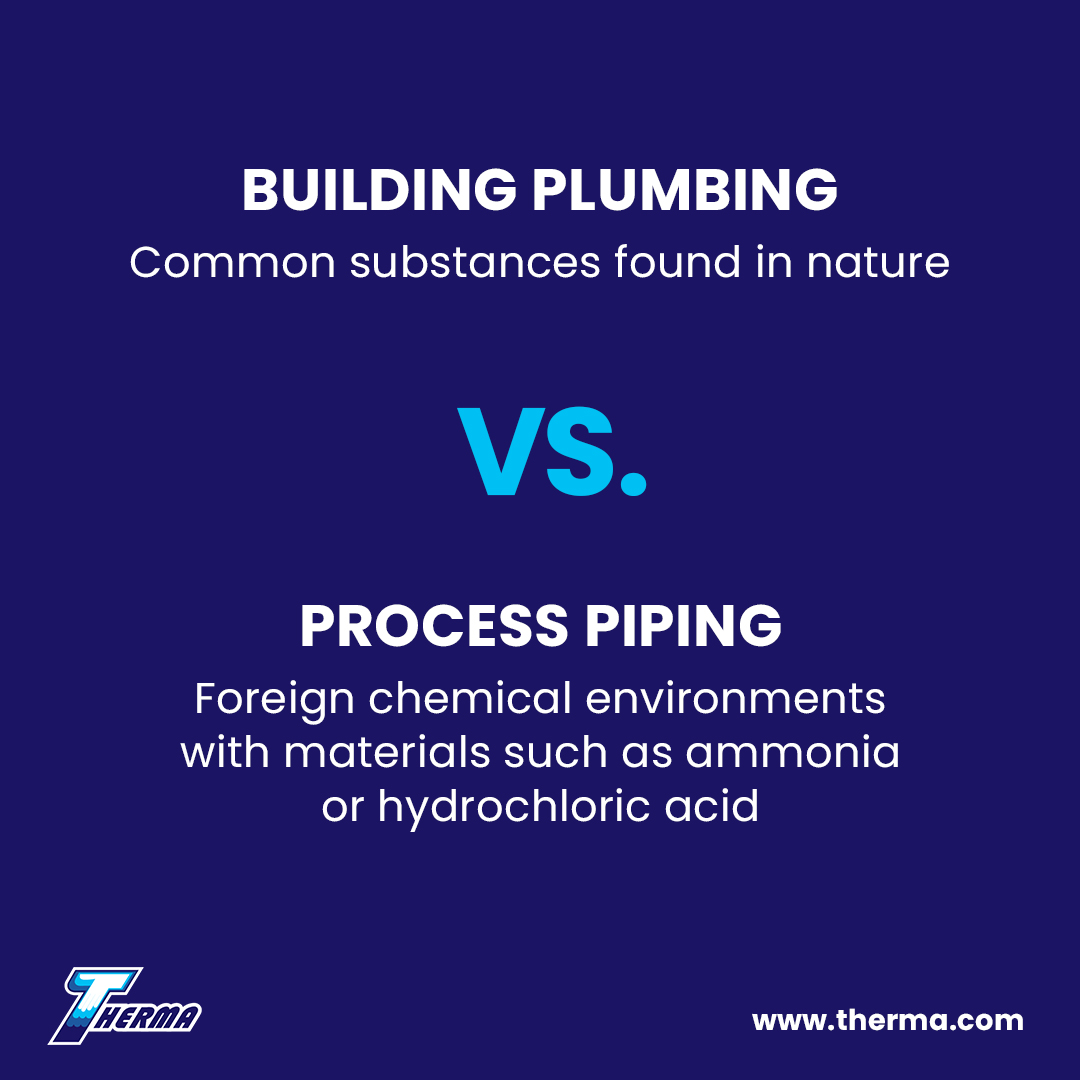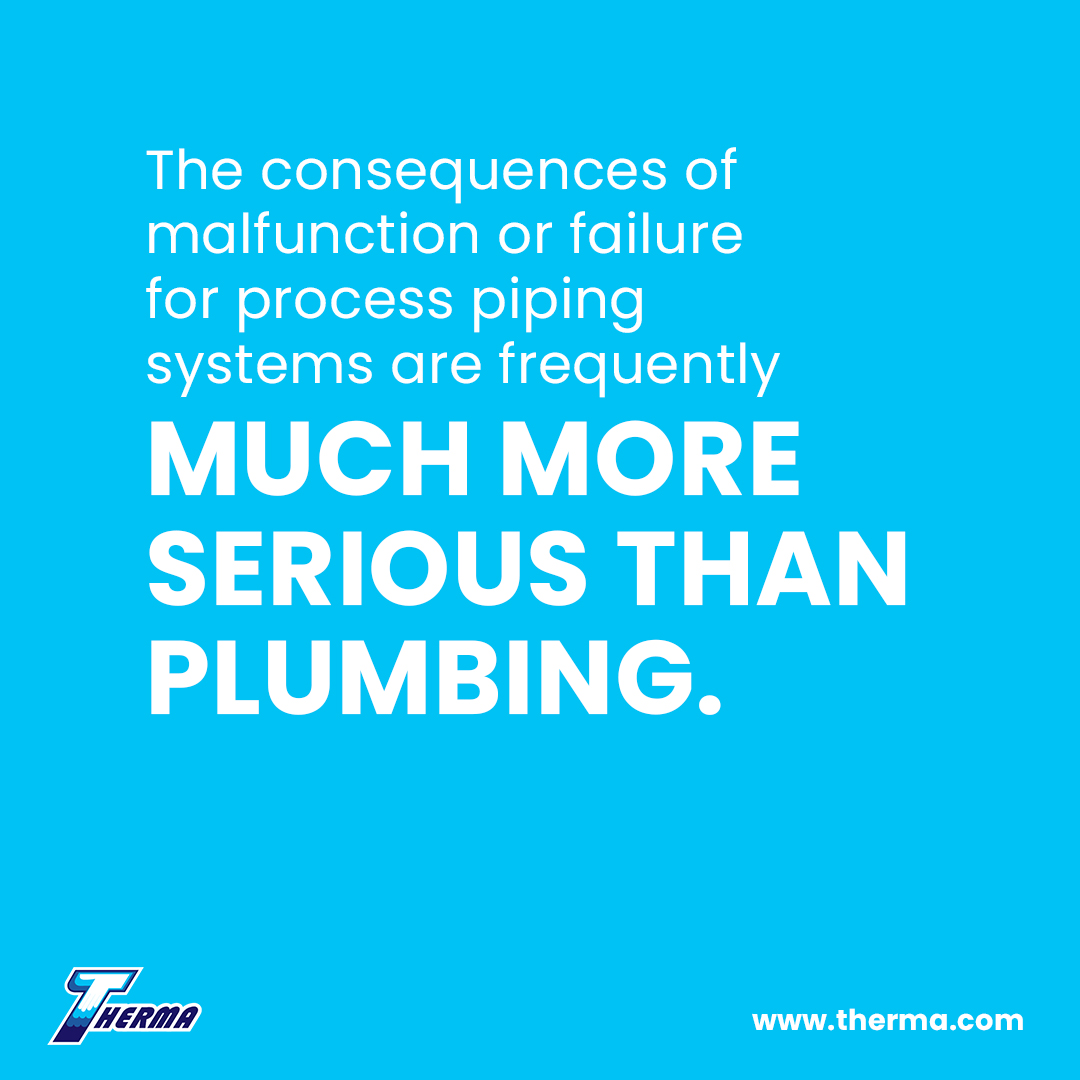Plumbing vs. Process Piping – let’s talk about it. Look, it may seem difficult to define exactly what plumbing and process piping are since they appear to use similar materials and techniques. If you set out to specify plumbing or process piping, you’ll notice that there are important differences between the two which are critical to proper and safe plant operation.
Building Support and Process Piping Support

Building plumbing handles familiar systems such as water supplies and sanitary sewer outflow. It is designed and constructed according to the local building code. Process piping supports the operations within the building. It answers to more rigorous national standards because of the conditions and materials it may be required to handle, including hazardous chemicals and food products.
Related Engineering Standards
ASME (American Society of Mechanical Engineers) standards divide pipe systems between building systems, power systems, and process piping systems. ASME standard B31 covers them generally, while ASME standard B31.3 clarifies what process piping is and B31.1 discusses power piping. Other ASME standards specify training and certification requirements for personnel working with process piping systems.
Materials Handled by Process Piping
Plumbing handles basic operational materials for a building, such as water, which are fairly inert and safe. Process piping handles manufacturing chemicals, petrochemicals and other hazardous, reactive, or otherwise specialized substances such as dairy milk or pharmaceutical ingredients.
System Parameters
North American process piping is covered by ASME standards, which specify design, fabrication, system components, installation techniques, and testing. These standards anticipate a wide variety of pipe uses, and specify parameters appropriate for each material handled. The standards also cover dozens of piping materials used for specific purposes such as the non-metallic piping common in semiconductor plants, and specific metal alloy piping used in certain chemical plants.
Like Plumbing in Another World

Building plumbing deals with common substances found in nature, while process piping is designed for foreign chemical environments with materials such as ammonia or hydrochloric acid. Process piping goes beyond basic plumbing concerns such as the temperature and state of water to include the characteristics of many different substances with a wide range of freezing and boiling points. Ammonia, for example, has a much lower boiling point than water when below typical room temperature. The special materials used in process piping can also make safety precautions for temperature and vibration more complex.
Process Piping Design Engineers
The requirements of process piping go beyond the standard training which plumbers receive. Depending on the complexity and risks involved in the project, a designer may range from an engineer with an advanced education and five years of experience to a registered Professional Engineer with substantial experience. The engineer should be familiar with related ASME standards at a minimum, with certifications preferred.
As a mechanical engineer, the designer will also be experienced with the valves, fittings, pipes, and other components of the system and understand how to perform calculations to evaluate the effects of stresses on the system. The consequences of the system receiving damage can be severe, and even rare events such as earthquakes must be considered in the design.
Degree of Skill and Training for Workers
Plumbing is the delivery and recovery network for building systems and supplies which may be used by processes such as chilled water. These can be handled by professional industrial plumbers. This system of pipes which carry materials throughout the stages of chemical and other processes, and requires pipefitters with ASME section IX training for welding techniques, metallurgy, and other specialized materials and techniques.
A Big Difference

Process piping may look like complex plumbing, but the specific requirements involved in the design, construction, and operation of the process system demand experience, expertise, and materials beyond those involved in traditional building plumbing. The systems must meet more stringent requirements, and the consequences of malfunction or failure are frequently much more serious than plumbing. These risks could involve personnel harm, disruption of essential production processes, and the need for expensive accident or disaster recovery procedures.
By Dave Maddox
Dave is a technical consultant and freelance writer with experience in control systems and information technology.
Sources:
- https://www.pmmag.com/articles/96335-plumbing-vs-process-piping
- https://www.pmengineer.com/articles/87857-process-piping-and-the-codes
- http://www.jobhero.com/piping-engineer-job-description/
- https://pubchem.ncbi.nlm.nih.gov/compound/ammonia
- http://www.weldingengineer.com/Section%20IX%20of%20asme_bpvc.htm
- http://engstandards.lanl.gov/esm/pressure_safety/process_piping_guide_R2.pdf (ASME B31.3)







